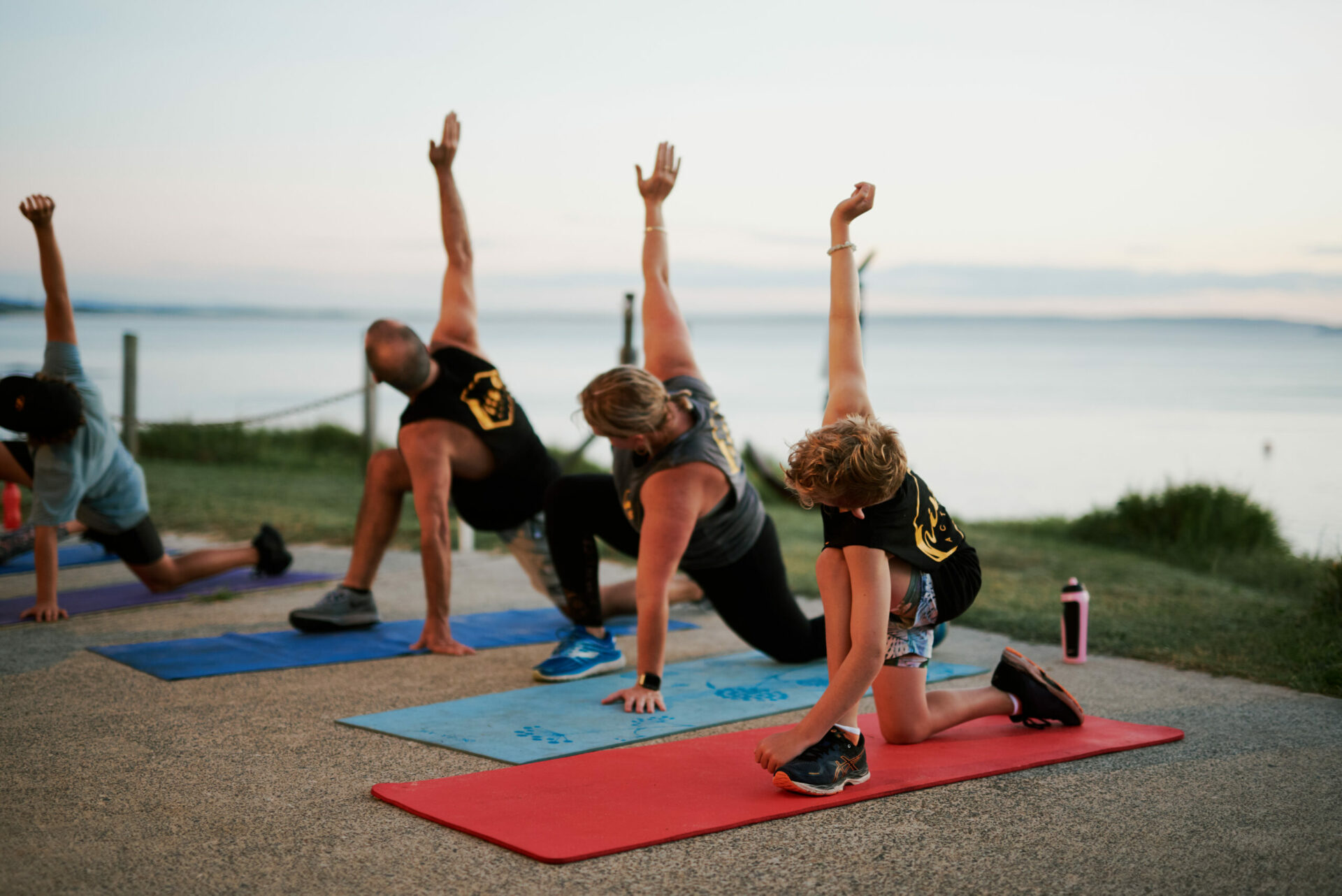Since bursting onto the fitness scene in the late ’60s, group fitness programs have enjoyed growing popularity. Indeed, the movement has evolved far beyond its iconic reputation of aerobic dance classes with cheesy up-tempo soundtracks and an alarming amount of fluorescent leg warmers. Despite its seeming pervasiveness, many people remain hesitant about this style of exercising. Regardless of where you are in your fitness journey, working out with others can be a daunting prospect. Or maybe, it is just not completely obvious how many benefits are to be gained. We break down why group fitness is so effective and why it might be worth swapping your lone gym visit for a collective sweat sesh.
Better Results Through Increased Motivation
One benefit that you will often hear cited by those who enjoy group fitness classes is increased motivation, and this is not just the endorphins from a good workout speaking. There are loads of studies to back this claim up. Consider the Kohler effect. First described in the 1920s by German psychologist Otto Kohler, the Kohler effect states that a significant motivation gain occurs when individuals perform physical tasks in settings where they perceive themselves to be a less-capable group member. Kohler observed this phenomenon when studying members of a Berlin rowing club perform weightlifting tasks. He was staggered by just how much longer individuals could persist when others were relying on them. This is not surprising. No one wants to be the one that let the team down. However, further studies examining this effect have found that tasks do not have to be interdependent for this motivation gain to take place. One such study was published in the Journal of Sport and Exercise Psychology. Participants were asked to perform a series of plank exercises individually and then again next to a virtual partner who was manipulated to always be superior in capabilities. Incredibly, when participants were able to compare their performance against a more-capable companion, they held their positions for up to 24.1% longer. Researchers from the same study suggested that this is the result of psychological mechanisms common in group dynamics. As social animals whose survival has historically been dependent on acceptance and approval from the pack, humans are wired for social comparison. Exercising in an environment that fosters healthy competition prompts individuals to set higher goals for themselves. And higher goals translate to better results. Ironically, it is the thought of social comparison that turns many away from group fitness. But if you are wanting to squeeze the most out of your workouts, harnessing this deep-seated biological drive might just work to your advantage.
Encouraging and Supportive Environment
With that being said, feelings of inadequacy are always misplaced when considering joining group fitness. One of the stand-out benefits of these types of programs is how supported members feel by those around them. Whilst everyone might be at different levels of fitness and ability, everyone has entered with the same intent: to be healthier and happier. This shared sense of purpose creates an understanding environment where judgment is left at the door. Rather than feeling ridiculed for what you cannot do, you will find like-minded people who remember what it felt like to be where you are. Group fitness classes are a safe zone where exchange of advice and guidance is the norm. Encouraging chants of “you got this”, “almost there!” and “awesome job” are the backing tracks to these sessions. It is hard not to feel uplifted and inspired with support like that. Plus, there is nothing like bonding over mutual hate of burpees.
Mental Health Benefits
The mental health benefits of regular physical activity are well-known and plenty. A good exercise routine has been proven to reduce anxiety, depression, and low self-esteem whilst also improving sleep, mental alertness, and cognitive function. And that is just to name a few. Less well-known is that these benefits are maximised when exercise is performed in a group environment. In an endeavour to analyse the impact that different types of exercise have on mental and emotional wellbeing, a study published in The Journal of the American Osteopathic Association followed three separate groups of medical students over 12 weeks. The first group was to attend regular group fitness sessions, the second to work out alone, and the third was not required to exercise regularly. At various stages in the study, each group was asked to score their mental and physical quality of life, as well as their perceived stress levels. Those working out alone saw an 11% improvement in mental quality of life, but surprisingly did not experience any notable shift in perceived stress levels, despite on average working out twice as long. This is compared with participants who attended group classes. On average, they reported a 12.6% improvement in mental quality of life and a remarkable 26.2% reduction in stress levels. Researchers credited this increased resilience against stress to the social support networks found in group fitness programs. Whilst we might not all be going through the intensity of medical school; less everyday stress is something we could all benefit from.
Connection to Community
Tying in with the mental health outcomes of group fitness is community connectedness. The Australian Unity Wellbeing Index recognises community connectedness as one of the seven key realms of wellbeing. As humans, we possess an innate desire to feel included and supported by those around us beyond our family and friends. We also want to feel as if we provide something of value back. The fruits of progress have proved beneficial in many ways, yet modern culture frequently works against traditional community ties. Through providing a shared sense of identity, group fitness programs are a powerful tool for reconnecting individuals to their local communities. This was highlighted in a qualitative study undertaken in Japan. With the most rapidly aging population in the world, Japan has made the health of its elderly citizens a priority. As part of a community-wide physical activity intervention, older adults were encouraged to attend group exercise classes. The intervention proved successful in improving the physical health of participants. However, respondents were primarily grateful for the sense of belonging that they gained. Starting out as strangers, it was not long before participants were planning other social activities such as eating out and travelling together. Crucially, they felt they could rely on one another. Speaking of the friendships forged, one 73-year-old female said, “these are people I [now] go to for advice…They are a source of psychological comfort for me, and I really appreciate it.” Better health and new friends, signing up for group fitness is a win all-round.
Accountability
With these new friends comes another benefit – accountability. You have told someone you are going to be in class. They have told you they will be waiting for you. When your alarm goes off in the morning, this expectation drags you out of bed. The desire to not let someone else down acts as a sturdy buffer against the voice in your head tempting you to curl back up under your blanket. We have all been there. As tempting as that voice can be (“just five more minutes”), it is true that you always feel better and more accomplished the days you are able to beat it. One study that recruited both individuals and groups of friends to complete a weight loss program found that 95% of participants who started with a friend finished the program, whereas only 76% of those who started alone completed it. If you are someone who needs a little extra push, then the accountability that comes with a group fitness community could be the golden ticket to keeping you on course.
Everyone has different health and fitness goals. Because of that, the most suitable style of exercising will vary from one individual to the next. It is important to find what works best for you. But with so many benefits on offer, it is no surprise that the group fitness movement is booming.




